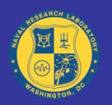Naval Research Lab posts solicitation for EO/IR aircraft self-protection systems and advanced ISR systems
 On August 28, the Office of Naval Research posted a solicitation for Development, Testing and Assessment of Advanced Electro-Optic/Infrared (EO/IR) Aircraft Self-Protection Systems and Advanced Intelligence, Surveillance, Reconnaissance (ISR) Systems (Solicitation Number: N00173-15-R-SE03).
On August 28, the Office of Naval Research posted a solicitation for Development, Testing and Assessment of Advanced Electro-Optic/Infrared (EO/IR) Aircraft Self-Protection Systems and Advanced Intelligence, Surveillance, Reconnaissance (ISR) Systems (Solicitation Number: N00173-15-R-SE03).
Advanced threats to our Naval forces are being fielded at a rapid pace. Threats include Surface to Air Missiles (SAMs) with next generation imaging infrared seekers and multi-mode radar/EO/IR (guided terminal homing capability), emerging high power Directed Energy (DE) weapons, and unconventional threats. Today’s modern battle space requires an ever-increasing capability for EO/IR self-protection, InfraRed CounterMeasures (IRCM), electronic information gathering and processing, ISR, and other EO/IR/RF sensor systems. Protecting our Warfighters from these new threats and providing them with the intelligence and situational awareness they need to succeed requires the development of advanced technology sensors and sensor suites, as well as the optimization and fusion of data with other onboard sensor information. To develop this next generation of sensors and sensor suites, the Naval Research Laboratory (NRL) conducts rapid advanced technology development activities in support of Naval Forces, which includes Navy/Marine Corps aircraft, surface and subsurface platforms, airfields ashore and expeditionary airfields in remote locations. These advanced technology development activities include: (a) research and development of advanced technology concepts, (b) early test and evaluation of prototype systems, (c) evaluation of advanced concept aircraft IRCM and ISR systems for Military and other aircraft (d) identification of requirements for developing solutions that counter existing and projected threat systems, (e) analysis and evaluation of promising new technologies, and (f) development of one-of-a-kind measurement and evaluation processes to facilitate the transition of advanced technologies into the Technology Development (TD) phase of Navy/Marine Corps acquisition programs of record.
The Contractor will provide highly skilled personnel to conduct research, analysis, measurements, hardware and software development, and field-testing of EW prototype systems. The required engineering efforts and areas of technical investigation will be broad, but will emphasize the optimization of developmental electronics hardware, embedded software, and test & evaluation capabilities to facilitate efficient prototype development, testing and effective exploitation of EO/IR sensors and sensor systems.
Types of developmental systems and programs requiring support include (a) ISR sensors and systems, (b) manned air/surface platform survivability, (c) IRCM systems and (d) unmanned aerial and surface vehicle sensor systems. Additional efforts will be directed at identifying and evaluating what capabilities can be achieved with the addition of alternative technology sensor suites and the use sensor fusion to increase sensor suite capabilities. Initial candidate aircraft will include the EA-6B, EA-18G, E-2C, P-3C, P-8A, AV-8B, F/A-18A/B/C/D/E/F, C-130 and F-35A/B/C JSF fixed wing aircraft as well as, V-22, SH-60/MH-60, CH-53E/K, CH-46E, MH-6, UH-1N/Y, AH-1W/Z rotary wing aircraft and developmental/fielded Unmanned Aerial Vehicles/Unmanned Combat Aerial Vehicles (UAVs/UCAVs). Aircraft used for testing of developmental systems would include aircraft such as the Dehavilland Twin Otter, Beechcraft King Air, UH-1, H-60 and P-3.
Technical work under this action will include in-depth expertise in requirements analysis and the evaluation and testing of complex, high-resolution EO/IR sensors and sensor systems. The overall objectives of this effort are the development and testing of prototype EO/IR sensor systems for IRCM and ISR applications such as: (a) Laser based Directed Infrared Counter Measures (DIRCM) systems, (b) advanced airborne ISR systems, (c) state-of-the-art technologies with promise for providing solutions to current or projected Fleet aircraft and other Naval platform survivability problems, and (d) the implementation, evaluation and transition of these technologies into engineering development or formal acquisition programs.
For full information and solicitation documents are available here.
Source: FedBizOpps







